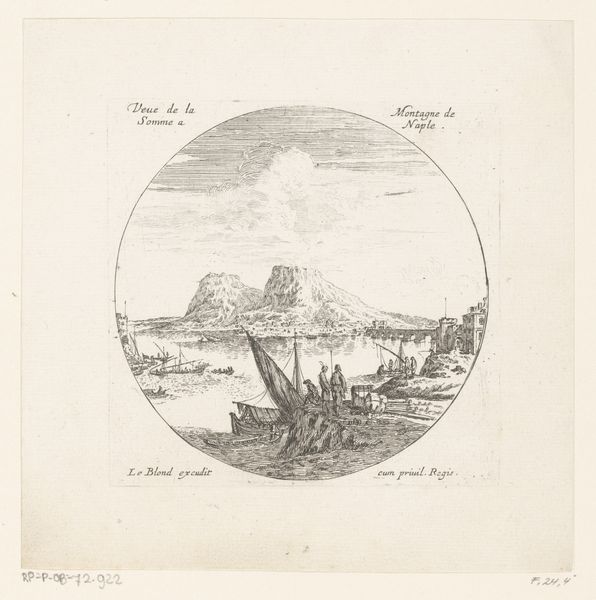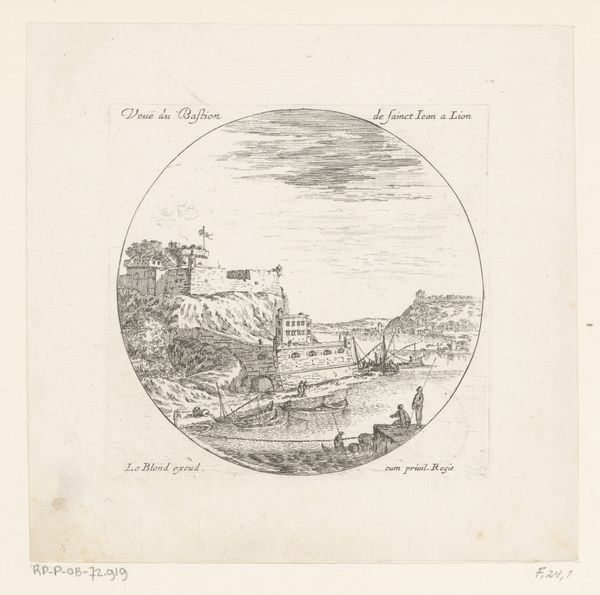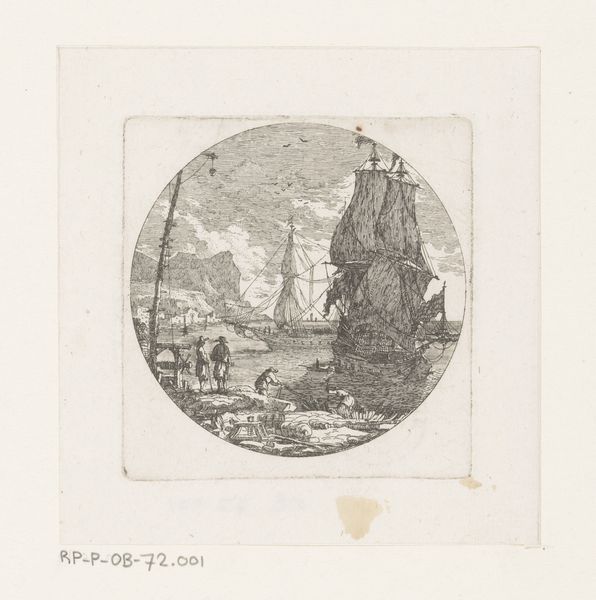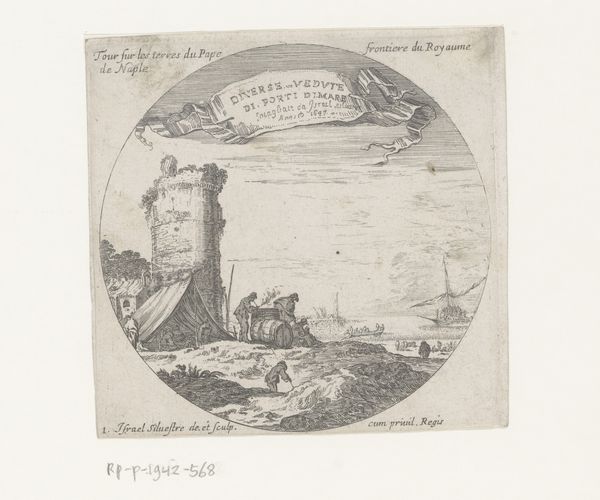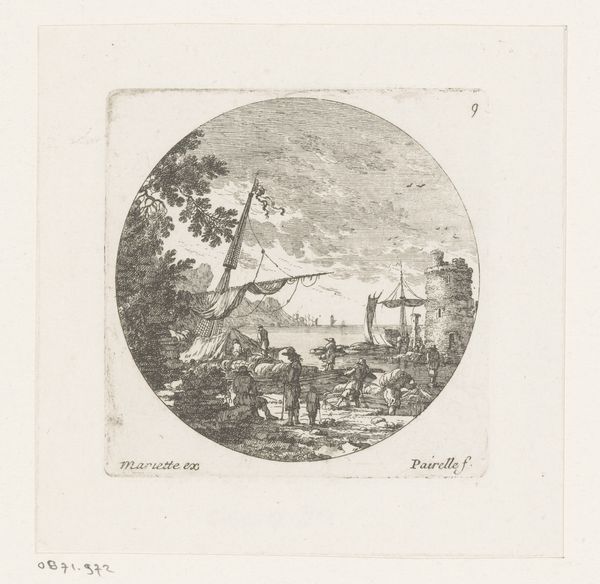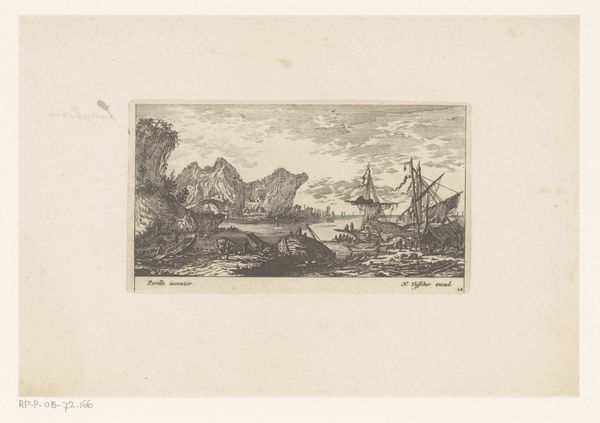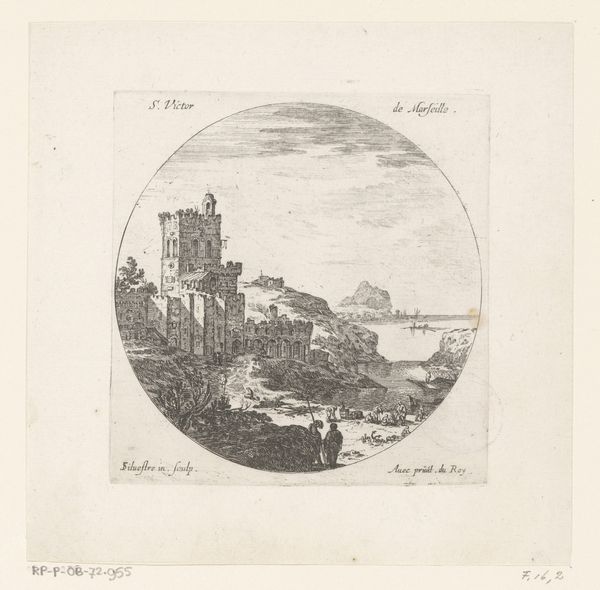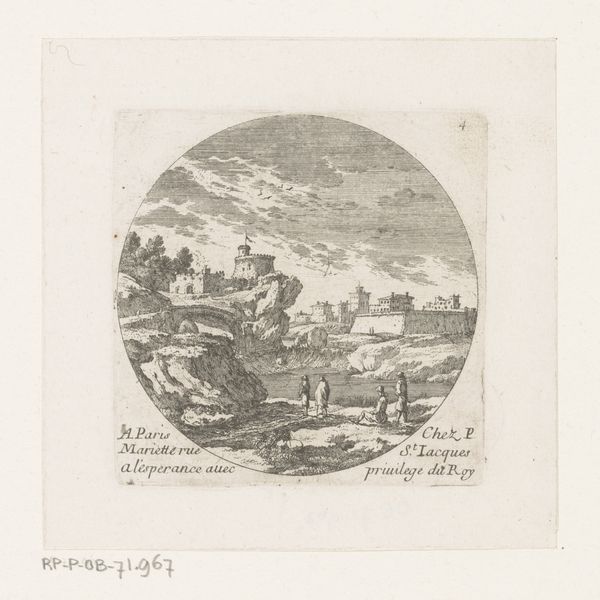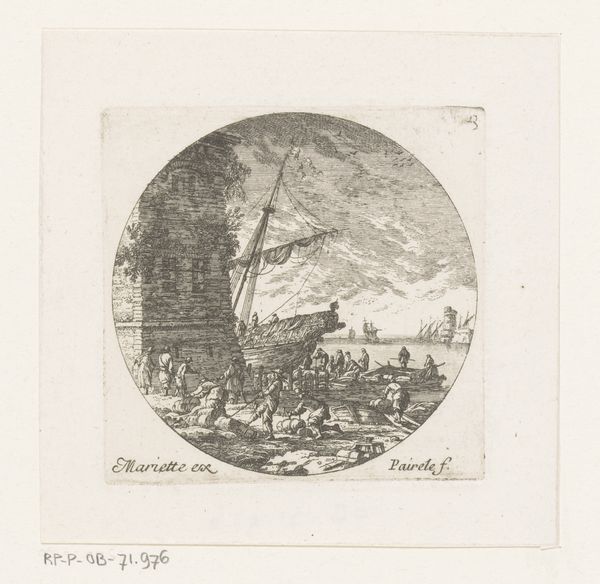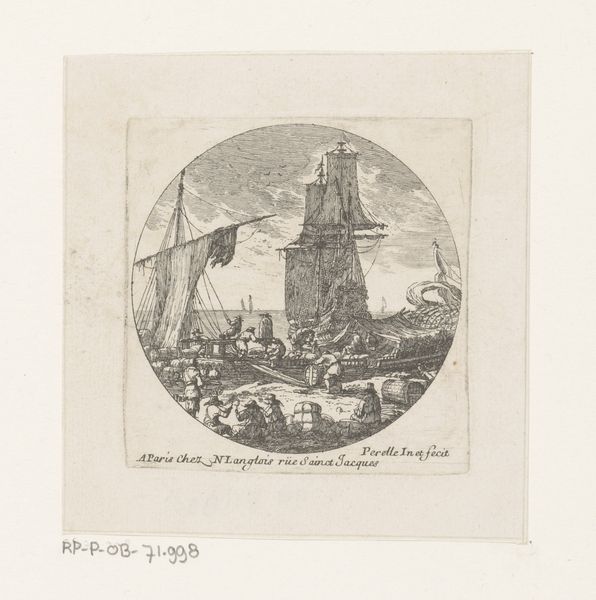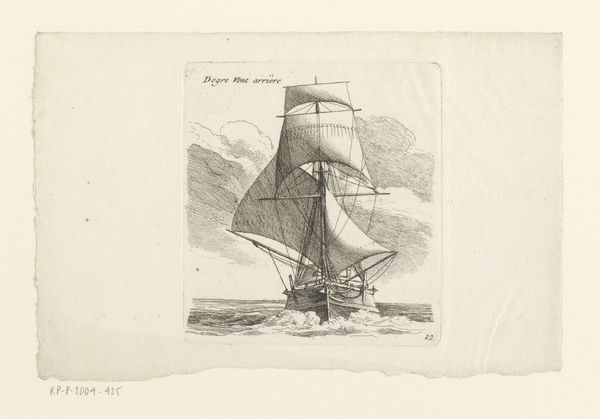
print, etching
#
baroque
# print
#
etching
#
landscape
#
cityscape
#
history-painting
Dimensions: height 117 mm, width 117 mm
Copyright: Rijks Museum: Open Domain
Editor: So, here we have Israel Silvestre's "View of the Port of Marseille," made sometime between 1645 and 1691, it looks like an etching. The circular composition and intricate details give it a very storybook feel, almost like looking into another world. What's your take on this, particularly in relation to its historical context? Curator: It's crucial to understand that Marseille was not just a picturesque port. It was a key site for colonial ventures and trade, deeply entangled with histories of exploitation. This image, while seemingly benign, participates in the visual rhetoric of empire. Silvestre, by focusing on the "beauty" of the port, perhaps glosses over the socio-political realities underpinning Marseille's wealth and power at that time. Editor: So, you're suggesting that these landscape depictions are never neutral? Curator: Precisely. Landscape imagery often naturalizes power structures. Consider the citadel overlooking the port; it represents authority and control, silently observing maritime activities, even though Silvestre represents it almost idyllically. Who benefitted from the "progress" depicted in this image? How were indigenous populations impacted by Marseille's maritime dominance? Editor: It's a bit unsettling to see it this way; the image seems so calm on the surface. Is it possible Silvestre wasn't even aware of the implications of his work? Curator: Maybe. But an artist, like all of us, exists within a specific ideological framework. Even if unintentional, their choices contribute to a broader cultural narrative. By appreciating its beauty, we must ask, whose beauty are we really admiring? What historical traumas are obscured by it? Editor: I’ll never look at historical landscapes the same way again. It really brings a new sense of responsibility to viewing art. Curator: Exactly. Art isn’t just about aesthetics; it’s about engaging with complex power dynamics and historical realities. The most challenging part of that is finding new entry points that reveal rather than conceal.
Comments
No comments
Be the first to comment and join the conversation on the ultimate creative platform.
